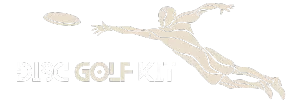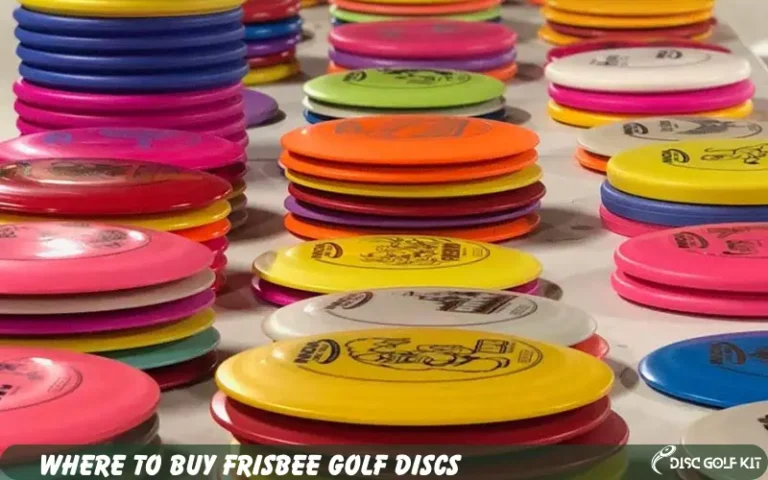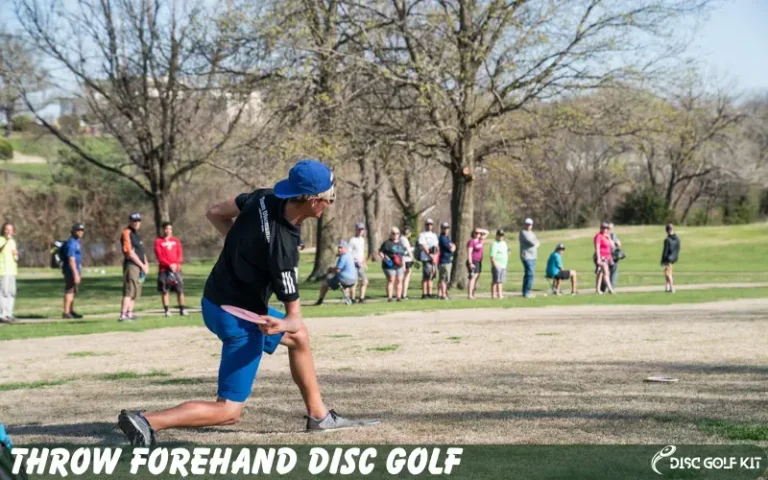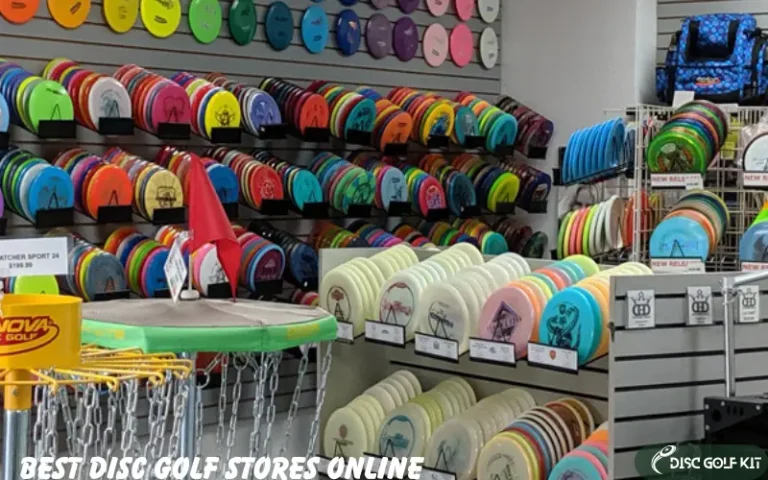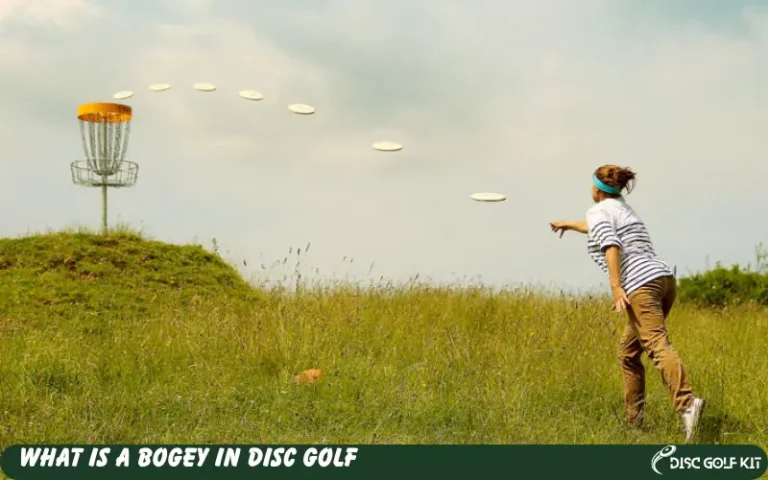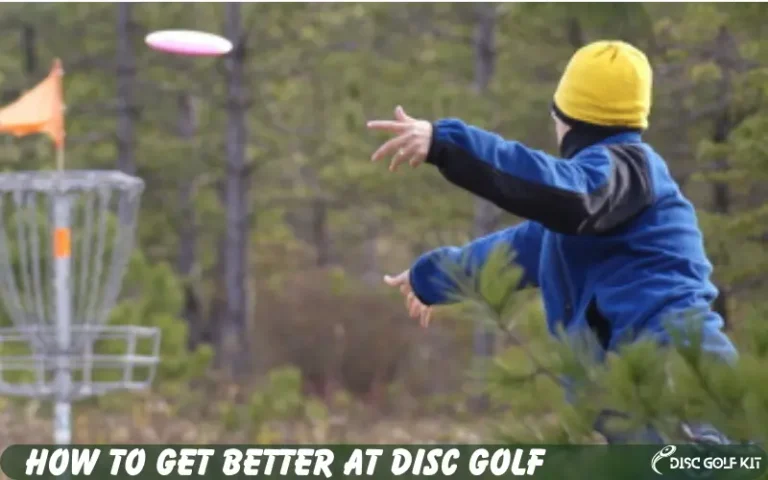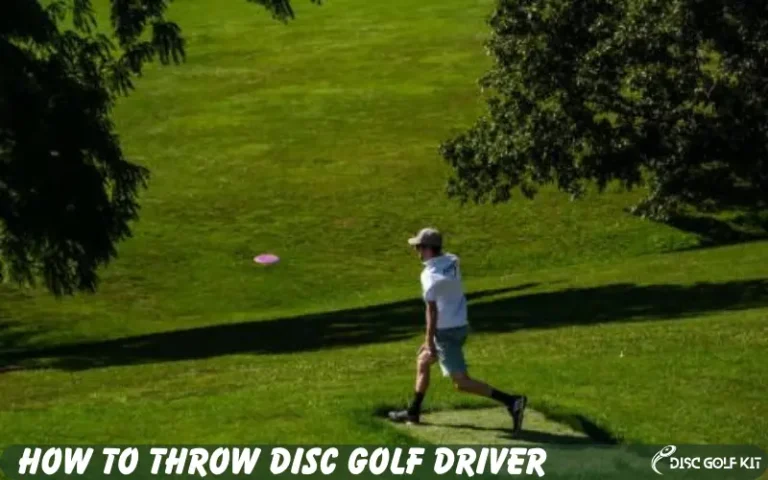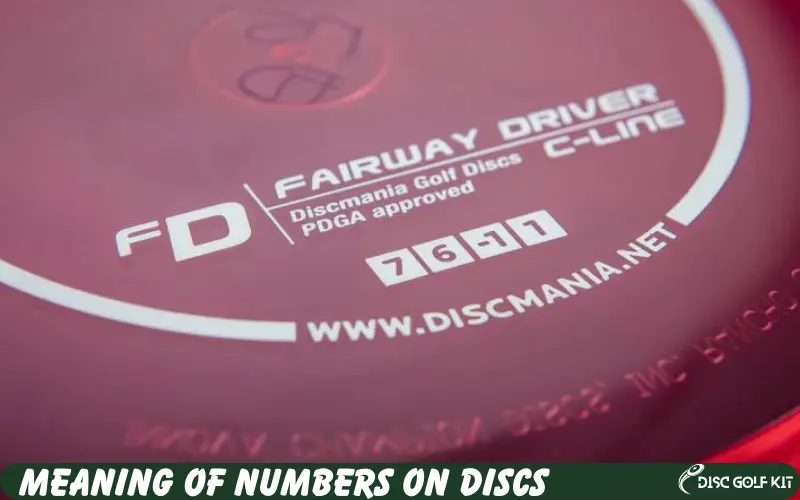
Disc golf has taken the world by storm, offering players a unique blend of skill, strategy, and outdoor fun. But as you look at various discs, you might wonder what the numbers mean on disc golf discs. The numbers on a disc golf disc, often referred to as flight ratings or flight numbers, provide information about the disc’s flight characteristics. These numbers are a standardized way for disc manufacturers to communicate how a disc is expected to behave when thrown at a certain speed and power. This article aims to demystify these numbers and help you improve your game, and you will know What Do the Numbers Mean on Disc Golf Discs?
What do the Numbers Mean on Disc Golf Discs?
Disc golf, a sport that combines the leisure of golf with the thrill of frisbee, is fast gaining traction. From local parks to professional tournaments, its growing appeal is undeniable. As you join the ranks of enthusiastic players, you’ll quickly realize there’s more to the sport than just throwing a disc. Specifically, those numbers printed—What Do the Numbers Mean on Disc Golf Discs? If this question leaves you baffled, you’re not alone.
Understanding these numbers can be the game-changer you’ve been looking for, transforming you from a casual player into a formidable opponent. In this detailed guide, we’ll demystify each number, equipping you with the know-how to improve your game in leaps and bounds.

Why Numbers Matter?
These numbers aren’t mere decorations; they’re precise metrics that dictate how your disc will behave in the air. They define your disc’s speed, ability to glide, initial curve, and end-of-flight behavior. Ignoring these numbers is akin to playing poker without looking at your cards; you’re throwing your game to chance.
Picking a disc with suitable numbers allows you to execute precise shots for specific scenarios, making you a thrower and a strategic player. If you’ve been selecting discs solely based on their colors or how cool they look, you’ve missed a crucial layer of strategy. Understanding the numbers is like unlocking a secret arsenal. From now on, each disc you select won’t just be a piece of equipment; it will be a calculated choice tailored to enhance your performance for your specific challenge.
The Four Numbers
You pick up one of your disc golf discs and notice four numbers— say 7, 5, -1, 2. These numbers are shouting secrets about how this particular disc will fly, waiting for you to decode them. What Do the Numbers Mean on Disc Golf Discs? represent Let’s break it down. In that order, these numbers are universally categorized as Speed, Glide, Turn, and Fade. These four numbers together are like a DNA code for how your disc behaves. Understanding them allows you to select the right disc for the right situation, elevating your game from a casual throw-around to a strategically thought-out plan.
Speed: The Need for Speed—or Not?
The first number, which in our example is 7, stands for Speed. Imagine you’re on the tee pad, eyes on the distant basket. The Speed number tells you how fast you should throw the disc to make it perform as intended. A high-speed number—say 13 or 14—means this disc needs a powerful arm to unleash its full potential. A lower number—perhaps 3 or 4—indicates it’s more forgiving and suitable for beginners or shots requiring less power.
This number is akin to a car’s horsepower in disc golf disc speed, signifying how much oomph you need to put into your throw for the disc to achieve its maximum potential. A high-speed disc is aerodynamically designed to cut through the air quickly, reducing drag and covering great distances. However, these high-speed discs are not forgiving; they demand a robust and accurate throw. Otherwise, they can go wildly off course.
Understanding the importance of disc golf disc speed empowers you to adapt your game to various scenarios. A high-speed disc is your go-to for long, open fairways, where you can fully utilize its distance capability. On the other hand, lower-speed discs are your close companions for tighter situations that require finesse and control. By knowing when to use each, you’re not just playing; you’re strategizing, and that’s how champions are made.

Glide: Your Ticket to Extra Yards
Next up is Glide; in numerical terms, Glide is typically measured on a scale from 1 to 7, with higher numbers indicating better Glide. A disc with a high glide rating can be considered the ballerina of your disc bag—graceful, elegant, and able to stay airborne longer.
High-glide discs can provide extra distance, especially useful when contending with lengthy fairways or trying to clear an obstacle like a pond or a small hill. But what about those scenarios where you want your disc to stay within a reasonable distance? You may be dealing with a tricky, narrow fairway or a menacing hazard beyond the basket. This is where a disc with a low glide rating comes into play. Low-glide discs are less prone to being carried away by the wind and will generally offer more control, allowing you to execute more technical shots precisely.
In your disc golf journey, understanding the concept of disc golf disc glide is akin to discovering a hidden superpower. Whether you need that extra push to clear a water hazard or the control to land your disc on a challenging green, the right amount of Glide can be the difference-maker. Armed with this knowledge, you’re not just throwing; you’re crafting your path through the air, one disc at a time.
Turn: The Initial Path, Your First Impression
The third number you’ll see, -1 in our example, is Turn. Measured on a scale from -5 to 1, the Turn number on a disc golf disc tells you how much and in which direction the disc will deviate during the initial part of its flight. A negative number signifies that the disc will curve to the right (for right-handed, backhand throws), while a disc with a Turn of 0 or 1 will fly more straightforwardly.
On the flip side, let’s say you’re dealing with a tunnel shot—a narrow, straight path that leads to the basket. Any curve could send your disc ricocheting off a tree, so you’ll want minimal Turn. A disc with a Turn of 0 or 1 will fly as straight as an arrow, helping you master these precision-demanding shots.
Understanding the concept of disc golf disc turn adds an essential layer of depth to your game. It enables you to pull off complex shots, navigate around obstacles, and approach the basket from angles that would be impossible with a more straightforward disc. When you get to grips with Turn, you’re no longer merely playing disc golf—you’re sculpting your shots, shaping the airways like an artist, and turning challenges into opportunities.
Fade: The Grand Finale of Your Throw
Last but certainly not least is the Fade, represented by the final number, 2. Your disc is nearing the end of its journey. Will it die out straight or curve back towards the left? That’s what the Fade number reveals. A higher Fade number will make your disc take a noticeable left turn as it loses speed, making it essential for shots that need to curve around an obstacle toward the end.
Fade is typically denoted by the last of the four numbers on a disc, ranging from 0 to 5. A high fade number means your disc will make a pronounced left curve at the end of its flight (for right-handed backhand throws), while a low fade will see it mostly maintain its line, dropping relatively straight down.
Mastering disc golf disc fade is the finishing touch on a well-rounded disc golf game. By understanding how different fade numbers impact the end of your disc’s flight, you can make smarter disc choices for specific situations. You aren’t just throwing a disc; you’re orchestrating its entire flight path from start to finish, like a maestro leading a symphony. And when you nail that perfect throw, taking full advantage of your disc’s fade, the applause—be it from your buddies or just in your head—is well-deserved.
How to Read the Numbers Together
As you hold a new disc in your hands, you find yourself staring at the sequence of numbers printed on it: 9, 5, -2, 2. Each number has its own story and role to play in your throw. But how do they form a coherent narrative for your game? Interpreting these numbers in unison is like reading musical notes on a sheet—each contributes to the melody that is your disc’s flight path.
The first step is to understand how each attribute can affect the others. A high-speed disc with many glides can travel incredibly far, but if it has a high turn, it may veer off course during the initial part of its flight. Similarly, a disc with low speed but high fade may not go far, but it can be incredibly accurate.

Imagine you’re facing an open field leading to a distant basket. It’s a perfect set-up for a disc with high speed, high glide, low turn, and medium fade. The speed and glide will help cover the distance, the downturn will keep it relatively straight, and a touch of fade will bring it back toward the basket as it slows down.
Reading the numbers together is a skill honed with practice and experience. Each disc in your bag is like a musical instrument in an orchestra, and knowing when to use which one is the key to a beautiful performance. As you grow more adept at interpreting these numbers, you’re not just throwing discs—you’re composing the aerial ballet that is your disc golf game, and each throw is a note in your ever-evolving symphony.
Conclusion: What Do the Numbers Mean on Disc Golf Discs?
You’ve reached the end of this journey, a quest to unravel the mystery of what the numbers mean on disc golf discs. You’ve dived deep into each number—Speed, Glide, Turn, Fade—and learned how they weave together to script the story of your disc’s flight. You’ve been handed the conductor’s baton, ready to orchestrate a disc golf symphony. This knowledge isn’t just theoretical; it’s eminently practical. It’s the key to making informed decisions for every throw. You’re not merely tossing a piece of plastic but executing a well-thought-out play finely tuned to your game’s unique needs and challenges.
So go ahead, take this newfound wisdom to the course. Let it inform your disc selections, shape your strategies, and refine your techniques. Because the more you understand these numbers, the more you unlock your potential to play disc golf and excel at it. To not just hear the music but to compose it, one throw, one note, one magical moment at a time. Your disc golf symphony awaits. And you, armed with the knowledge of what those numbers mean, are ready to conduct it to perfection.
FAQs

Written by
Declan Hodgson
Meet Declan Hodgson, your disc golf sherpa at DiscGolfKit.com. Navigating the twists and turns of the sport, I’m here to guide you through the world of discs, gear, and the pursuit of that perfect throw.
